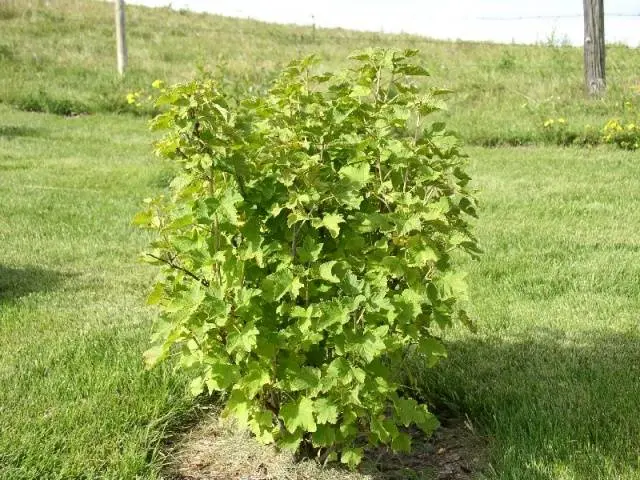Contents
Red currant bushes are a real decoration for a summer cottage. At the beginning of summer they are covered with bright green foliage, and at the end of the season they are covered with glossy scarlet berries. As you know, it is much easier to grow red currants than black ones, because this culture is not so capricious, it rarely gets sick and takes root well after planting. Usually, red-fruited varieties are grown not for the purpose of fresh consumption (since the berries are quite sour), but for the preparation of various jellies, jams, marmalades, sauces and ketchups. One of the best varieties of red currant is Marmeladnitsa, whose name indicates the high content of pectin, a gelling agent, in the berries. Redcurrant is suitable for both private gardening and industrial scale – the characteristics of the variety allow this.
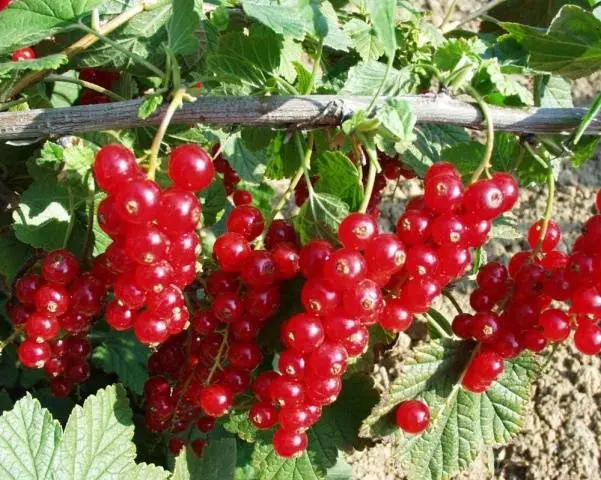
Photos and descriptions of the currant variety Marmalade are collected in this article. About what advantages the variety has and what disadvantages it has, is also described below. Gardeners who decide to have red currants for the first time will find useful information on planting and caring for this crop.
Features of the red-fruited variety
The currant variety Marmelandnitsa was bred in the early 90s of the last century, since 1996 it has been in the State Register of Agricultural Crops. The author of this species was an employee of the Orlovsky VNII L.V. Bayanova, who crossed the variety Rote Shpetlese and Maarsis Promenent. The breeder’s goal was to breed red currants with the highest possible pectin content.
The resulting variety met all expectations. In addition, the red currant Marmalade can be eaten fresh, however, the sweet tooth will not like it – the berries are too sour. But in sauces and ketchups, this variety is excellent: it adds exquisite piquancy and very pleasant sourness to dishes. Well, and, of course, it is a reliable and very strong thickener.
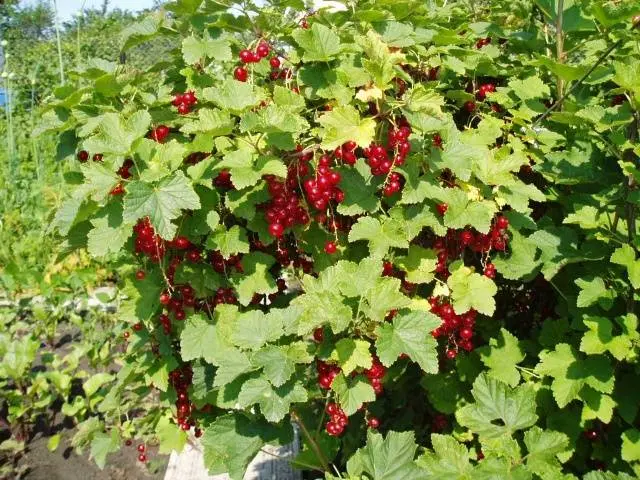
The description of the variety of red currant Marmeladnitsa is as follows:
- culture with late ripening – of all varieties, Marmalade sings the last (in most regions, the berries fully ripen by the second half of August);
- currant is self-fertile, but the yield of the berry can be increased by another 50% if another variety is planted nearby with the same flowering time;
- bushes are not very high – up to 150 cm;
- dense habit, semi-spreading shoots, not numerous (about 7-9 pieces per bush), powerful;
- fruiting berries on 3-5-year-old shoots (in accordance with this, currant bushes are pruned);
- young shoots of currant are slightly pubescent, have a dark green tint, and are brittle;
- the kidneys are large, have a pointed shape, are located at an angle to the shoot;
- there are several brushes in the knots – from three to five;
- the length of the brush may vary, as it greatly depends on the quality of the pruning of the currant bush (on average, 8-10 cm);
- the leaves of Marmalade are medium, five-lobed, wrinkled, dark green in color, pubescent below;
- the edges of the leaf plates are raised, wavy, the edge is finely serrated;
- the shape of currant berries is flat-round;
- a characteristic feature of Marmalade is an orange-red shade of fruits, the presence of pronounced white streaks;
- the size of the berries is large – the fruit can weigh from 0,6 to 1,9 grams;
- the separation of the fruits is dry, the berries do not crumble, do not crumple when harvested;
- fruits of Marmalade are sour, with a piercing refreshing taste (according to tasters, this red currant is much more acidic than other popular varieties);
- tasters rate the fruits of red currant at 4 points (out of five possible);
- sugar content in Marmalade berries – 7%, acids – 2,2%;
- the yield of the variety is high – about 13 tons per hectare or 1,5-2 kg from each bush (in conditions of private cultivation);
- redcurrant has amazing frost resistance: at the beginning of winter, the bush can withstand temperatures down to -35 degrees without damaging the bark and roots; in the middle of winter, the shrub can withstand frost down to -45 degrees;
- drought resistance in red currant is average, the bush also tolerates heat tests normally;
- Marmalade is resistant to bud mites; only aphids are dangerous for the variety;
- has a high immunity to anthracnose, septoria, powdery mildew;
- berries tolerate transportation and storage well.
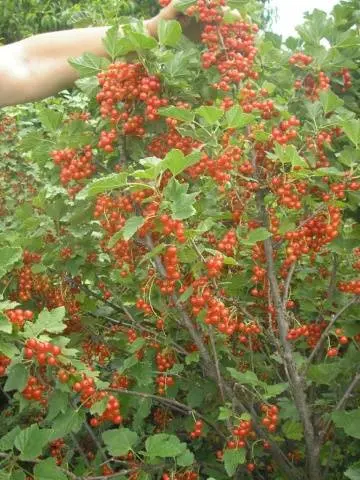
Currant Marmeladnitsa has a very valuable quality – excellent winter hardiness. It is this fact that has become the reason for the popularity of the variety among breeders: scientists often use the frost-resistance gene for Marmalade to produce new currant varieties and hybrids.
Advantages and disadvantages
Reviews of gardeners about the variety of currant Marmeladnitsa are the most ambiguous: the culture is valued for its productivity and durability, but many do not like the too sour taste of its fruits. In this case, you can advise summer residents to decide on the purpose of red currant before buying a seedling. If you need a variety for eating fresh berries, you can find sweeter currants. When a summer resident needs a berry for processing, he cannot find a better variety than Marmeladnitsa.

Marmalade has many advantages, and they are quite significant:
- large and very beautiful berries;
- high marketability of the crop (later ripening of currants is especially appreciated – in the fall, Marmeladnitsa has no competitors in the fresh produce market);
- very high frost resistance;
- excellent yield, equally stable in industrial and private cultivation;
- high immunity to diseases and pests;
- normal ability to tolerate heat and drought;
- suitability of fruits for transportation and storage;
- easy harvesting, no loose fruits.
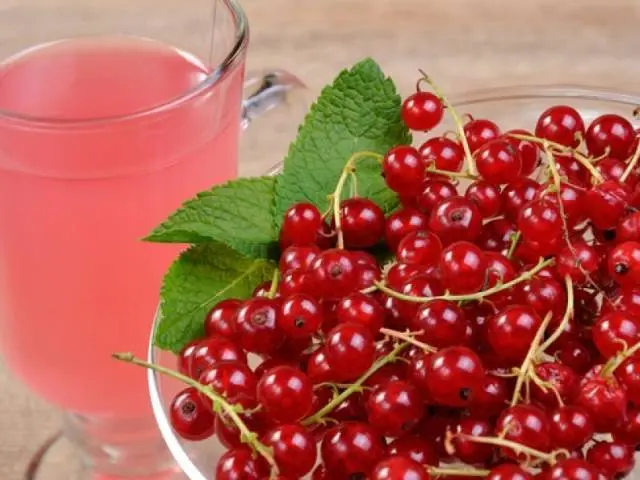
In addition to the very high content of acids in berries, Marmalade has several more disadvantages:
- the tendency of fruits to shrink with insufficient care;
- the need for regular soil moisture;
- the formation of abundant growth on the bushes;
- the need for pollinators for full yields;
- demands on the composition of the soil.
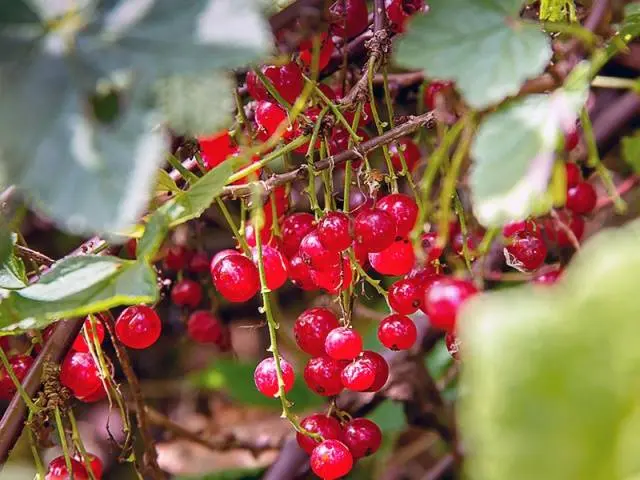
It should be remembered that the Marmalade currant was bred specifically for cultivation as an industrial crop, the most valuable quality of the variety is the high content of gelling substances in the fruits.
Shrub planting
It is much easier to start red currants on the site than black ones. Marmalade can be propagated by lignified perennial shoots or green cuttings with part of a two-year shoot (only in early autumn).
To plant a shrub, you need to choose a suitable place. Best of all, Marmalade will feel in openwork penumbra, because this variety is afraid of heat (leaves fall, shoots dry, and berries mummify). But dense shade should also be avoided, where fungal diseases and fruit pests will annoy the shrub.

The soil on the site should be loose and necessarily nutritious. The distance between the bushes is within 1-2 meters. The optimal planting time is late autumn, when the movement of juice stops in the currant shoots. In the middle lane, it is customary to plant a red marmalade in late October – early November. In the south, you can wait until mid-November.
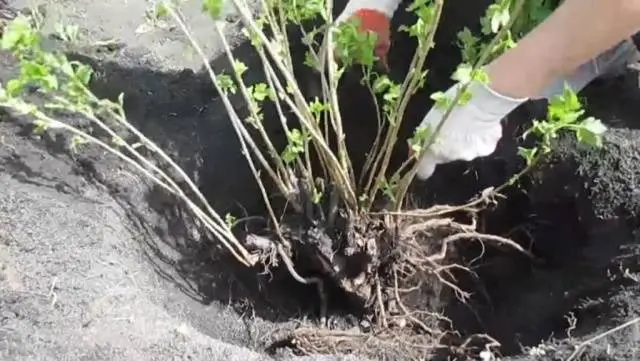
Landing is carried out according to the following technology:
- A couple of weeks before planting a seedling, they dig a hole of standard sizes – 50×50 cm.
- The fertile layer of soil removed from the pit is mixed with humus, superphosphate, wood ash.
- The Marmalade seedling is placed in the center of the pit and its roots are straightened so that their tips do not bend upwards.
- Sprinkle currants with earth, making sure that the root neck of the seedling is underground no deeper than 7-10 cm.
- The soil is lightly compacted and watered abundantly.
- At the end of planting, the hole is mulched with straw, peat or humus.
- The top of the currant is cut so that 3-4 buds remain on the seedling.
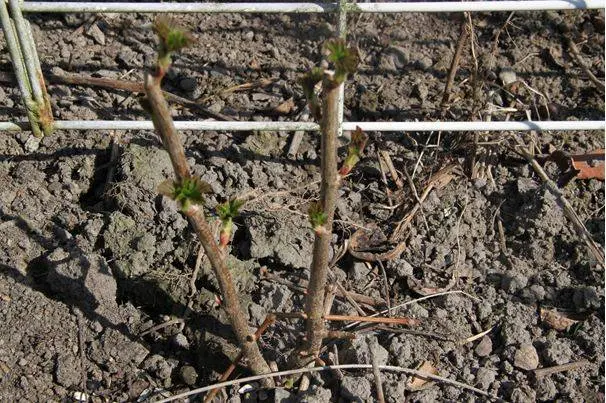
Care instructions
Marmalade requires intensive and competent care – the size of the bush, the quality of the fruit and the yield directly depend on this. However The most common stages of caring for this culture are:
- Water redcurrant is necessary only during periods of drought or intense heat. The rest of the time, the shrub should have enough natural rainfall. Additional irrigation may be needed during fruiting. It is better to water the bushes in the evening, pouring 20-30 liters under each plant.
- In order for moisture to linger longer in the soil, it is recommended to fill up the near-stem circle mulch. This will also protect the superficial roots from overheating.

- crop red currants are needed in the spring, until the buds have blossomed. Autumn pruning can weaken Marmalade, then it will not tolerate winter well. Immediately after planting, you need to leave 5-7 shoots, cut the rest. In the second year, 5 two-year-old shoots and 4 annual shoots are left. The third after planting in the spring, a bush is formed so that four shoots of different ages remain on it. The optimal cutting scheme is shown in the photo below.

- Nutrient top dressing are very important for the yield of Marmalade. In early spring, it is recommended to feed currants with urea. During the flowering period, pour the soil with a solution of bird droppings or cow manure, and spray the shoots with foliar mineral fertilizers. In September, the soil is thoroughly fertilized by introducing manure, humus or compost into the soil. Potassium and phosphorus should be added to the soil no more than once every 2-3 years.
- Pest diseases rarely annoy red currants, but for prevention it is better process the bushes before flowering folk remedies, biological or insecticidal preparations.
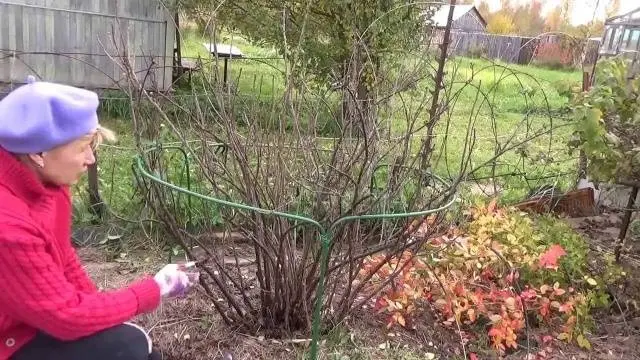
The frost resistance of Marmalade is simply excellent. Only in the northernmost regions is it better to play it safe and cover the near-stem circle with a thick layer of mulch or tie the shoots, bend them to the ground and cover.
Write Your Review
Conclusion
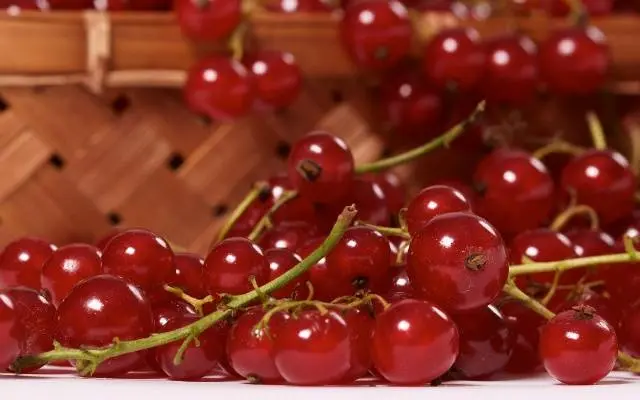
Marmalade is an excellent variety, characterized by versatility. This currant is often grown on an industrial scale, it is no less effective in small household plots, in summer cottages. The variety has a lot of advantages, but not all summer residents are ready to put up with the capriciousness of culture and excessive acidity of berries.










